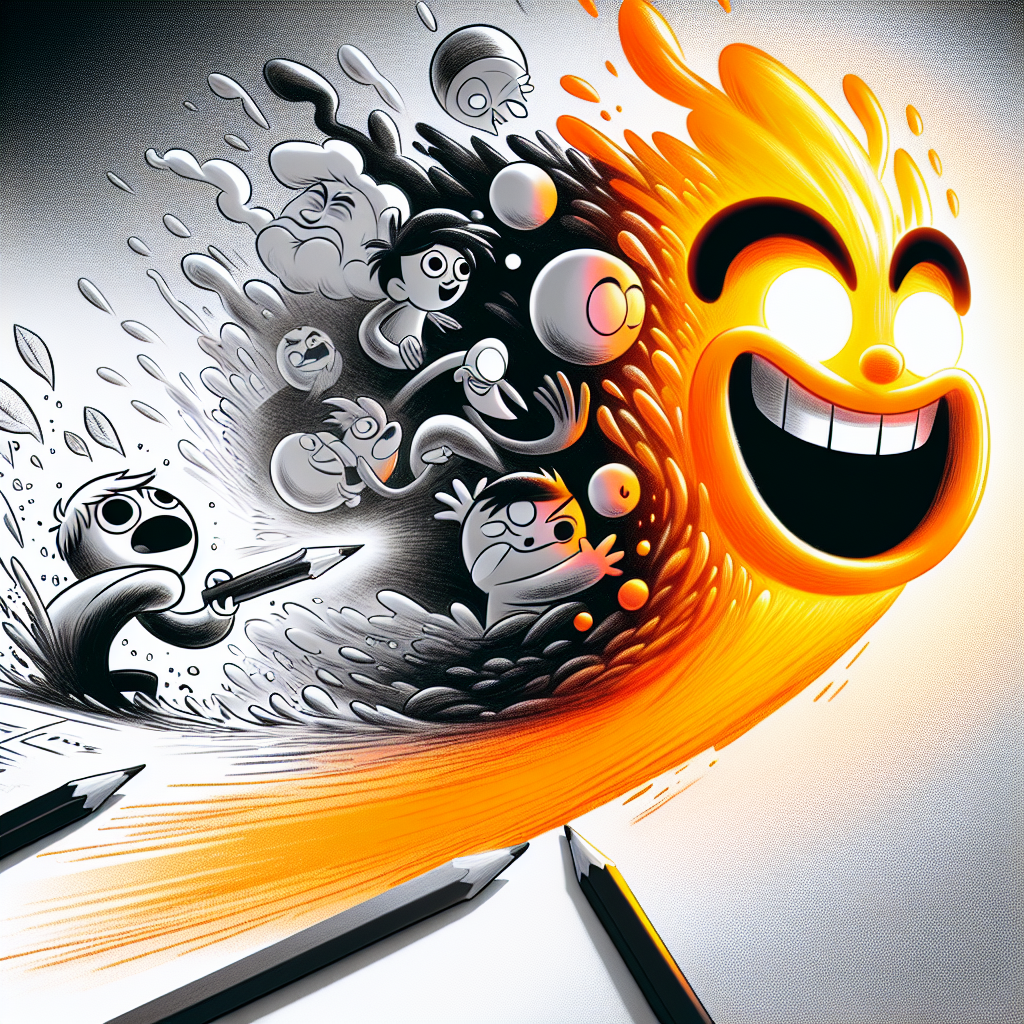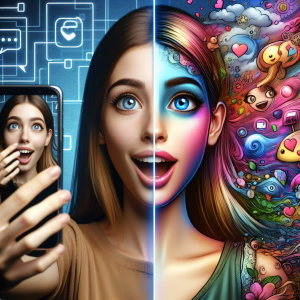Do you ever wonder how animated characters can make us feel emotions, laugh, cry, and become invested in their stories? It’s almost magical how a simple drawing on a screen can evoke such strong reactions from us. Cartoons hold a special power that transcends reality and connects with us on a deep emotional level. Let’s explore this fascinating phenomenon and delve into the ways in which animated faces can impact our lives.
The Magic of Animation
Animation is a unique art form that allows creators to bring characters to life in ways that live-action films cannot. Through the use of vibrant colors, exaggerated expressions, and whimsical movements, animators can capture the essence of a character’s personality and emotions with precision. This attention to detail gives animated characters a depth and complexity that resonates with audiences of all ages.
The Emotional Connection
One of the most powerful aspects of cartoons is their ability to forge an emotional connection with viewers. Whether it’s through heartwarming moments, comedic antics, or heartbreaking scenes, animated characters have a way of tugging at our heartstrings and making us empathize with their struggles and triumphs. This emotional resonance is what makes cartoons so memorable and impactful in our lives.
The Universality of Animation
Cartoons have a universal appeal that transcends cultural and linguistic barriers. Whether you’re watching a Japanese anime, a French cartoon, or an American animated film, the emotions and themes portrayed in these stories are often relatable to people from all walks of life. This universality of animation allows us to connect with characters and narratives from around the world, expanding our horizons and deepening our understanding of different cultures.
The Power of Cartoons in Education
Cartoons are not just entertainment—they can also be powerful educational tools. Animated shows and films can teach children valuable lessons about friendship, kindness, empathy, and more in a fun and engaging way. By using colorful visuals and memorable characters, cartoons can help young learners grasp complex concepts and retain information better than traditional teaching methods.
The Evolution of Animation
Over the years, animation has evolved exponentially, with advances in technology allowing for more realistic and immersive storytelling. From hand-drawn animation to computer-generated imagery (CGI), the possibilities for creating captivating animated worlds are endless. This evolution has led to a golden age of animation, with a diverse range of styles and genres that cater to audiences of all ages.
The Future of Cartoons
As technology continues to advance, the future of animation looks brighter than ever. Virtual reality (VR) and augmented reality (AR) are revolutionizing the way we experience animated content, bringing us closer to the characters and worlds we love. With the rise of streaming platforms and digital media, cartoons are more accessible than ever, allowing creators to reach a global audience and push the boundaries of storytelling.
The Impact of Animated Faces
The faces of animated characters have a profound impact on how we perceive and connect with them. From the expressive eyes of a beloved Disney princess to the quirky expressions of a lovable cartoon sidekick, animated faces play a crucial role in conveying emotions and building rapport with the audience. These faces become ingrained in our memories, shaping our perception of the characters and leaving a lasting impression on our hearts.
The Power of Imagination
Cartoons spark our imagination and transport us to fantastical worlds where anything is possible. Whether it’s a talking animal, a magical land, or a futuristic city, animated shows ignite our sense of wonder and curiosity, encouraging us to dream big and explore new possibilities. Through the power of animation, we can escape reality for a brief moment and immerse ourselves in a world of endless creativity and imagination.
The Influence of Cartoons in Society
Cartoons have a significant influence on society, shaping our values, beliefs, and perceptions of the world around us. From iconic characters like Mickey Mouse and SpongeBob SquarePants to groundbreaking shows like The Simpsons and Avatar: The Last Airbender, cartoons have the power to reflect and critique society in a way that resonates with audiences of all ages. Through humor, satire, and social commentary, animated shows can challenge our preconceptions and inspire us to think differently about the world we live in.
The Enduring Legacy of Animation
Despite the ever-changing landscape of media and entertainment, cartoons have stood the test of time and continue to captivate audiences around the world. From classic animated movies like Snow White and the Seven Dwarfs to modern-day animated series like Adventure Time and Steven Universe, the art of animation remains a beloved and cherished form of storytelling that transcends generations and leaves a lasting legacy for years to come.
What makes animation so powerful?
Animation is a powerful medium because it allows creators to bring characters to life in ways that resonate with audiences on an emotional level. Through vibrant colors, expressive movements, and engaging narratives, animated shows and films can capture our imagination and transport us to fantastical worlds where anything is possible.
How do animated faces impact our connection with characters?
Animated faces are instrumental in conveying emotions and building rapport with the audience. The expressive eyes, mouths, and facial expressions of animated characters help us empathize with their struggles and triumphs, creating a strong emotional bond that transcends reality and connects us with the story on a deeper level.
What is the future of animation?
The future of animation is bright, with advances in technology opening up new possibilities for storytelling and immersive experiences. Virtual reality (VR) and augmented reality (AR) are transforming the way we interact with animated content, while streaming platforms and digital media are making cartoons more accessible than ever before.








+ There are no comments
Add yours